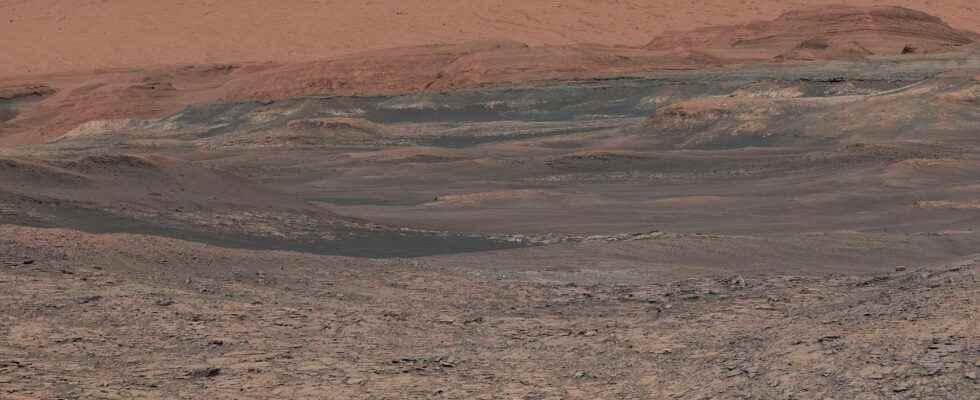In 2016, the Curiosity rover found a mineral called tridymite in sediments observed inside the Gale crater in which it landed exactly 10 years ago. According to some researchers, this mineral was formed by fractional crystallization in a magmatic reservoir, before being thrown into the air during an explosive eruption to finally fall and sediment to the bottom of the lake which was then present in this crater. It would thus testify to an explosive eruption on Mars where volcanism is mainly effusive…
You will also be interested
[EN VIDÉO] Zoom on the Curiosity landing site Animation made with real images from 2 orbiters showing the descent of the Curiosity rover into the Gale crater, then, at the end, the elements of the lander.
NASA had chosen that Curiosity lands in Gale Crater, as it was likely to have contained water liquid in the past, thus promoting the search for traces of life on this planetwhich is the main objective of this rover. The presence of liquid water at the bottom of this impact crater about 150 km in diameter, probably formed following the impact of a small celestial body about 3.7 billion years ago, was quickly confirmedin particular by observing sedimentary rocks in this location. It is moreover in a “mudstone”, a very fine-grained rock corresponding to clays or to solidified mud, that tridymite has been noticed, concentrated in a layer of this rock.
A rare mineral on Earth
This mineralrather rare on our Planet, is associated with volcanism said acidfrom puddles which have undergone a long deep cooling. The latter causes the formation of crystals, whose chemical elements that constitute them are depleted over time in the magma. Conversely, the other elements will concentrate there, such as silicon for example, a major element of magma and the main responsible for the viscosity of this one.
Thus, a magma which only remains for a very short time in the magmatic reservoirs of a volcano only crystallizes very little: it therefore remains basic and is quite low in silicon (about 50% all the same). It is therefore not very viscous and generates volcanism basaltmostly effusive, forming streams that spread out very far from the mouths eruptive. It is this type of volcanism which is predominant on Mars and which has notably built the enormous shield volcanoes found on this planet: Olympus Monsfor example, which is 22.5 km high, or Alba Mons whose diameter at the base measures 1,600 km!
Conversely, if a magma remains in the reservoir of a volcano for a long time, it crystallizes and becomes rich in silicon: it becomes acidic. Consequently, it becomes more and more viscous and generates an often highly explosive volcanism. It is in these acid rocks, rhyolites and obsidians, which tridymite is found on Earth. It is a polymorph of silicaof formula SiO2 : it is therefore only made up of silicon and oxygen.
How would this mineral then have found itself concentrated at the bottom of Crater Lake Gale?
Valérie Payré and her collaborators thus propose that a magma would have remained longer than normal in a magmatic reservoir, allowing the fractional crystallization to settle for a while. The silicon enrichment of the magma would then have allowed the formation of tridymite before theexplosive eruption of the volcano. The ashes produced during this would have fallen around, then the rivers would have brought these ashes into the lake where they would have sedimented, forming this layer that the rover sampled.
If this scenario turns out to be correct, it would be proof of explosive volcanism on the planet Mars, which would complement the observation of ash deposits and buildings that are reminiscent of stratovolcanoesof the cones of slag or cones of tuff… Here’s why Kirsten Siebach, a mission specialist on NASA’s Curiosity team, thinks it ” suggests that Mars may have a volcanic history more complex and intriguing than we would have imagined before Curiosity “.
Interested in what you just read?
